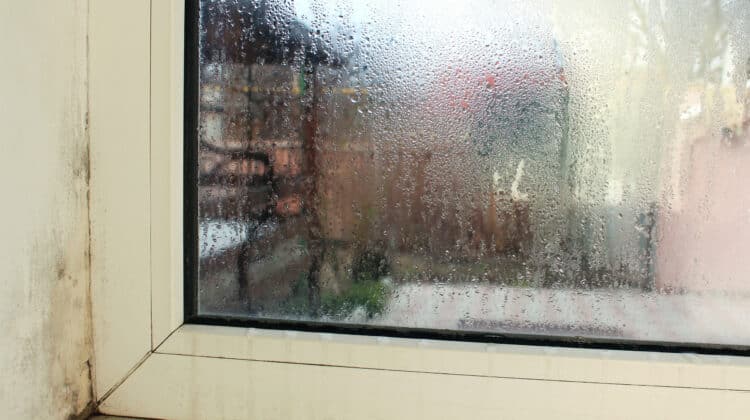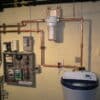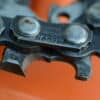
The many uses of air compressors make them handy bits of equipment to own. They help you cut costs, save time, and are a great way of extending the life of your tools. But that is if you care for them the correct way. The multipurpose functions of air compressors mean that they have to undergo servicing every so often. One of the servicing jobs performed on air compressors is draining moisture from the system. That’s because condensate water collects within the tank. Do not fret. That problem is fixable, and it is so easy you can do it yourself. In this article, we will take a look at how to drain air compressor units.
When it comes to service, the size of your air compressor unit does not matter. You could own a two-gallon unit or an industrial-sized unit. Draining the tank is essential if you want your system and tools to last.
Table of Contents
Where Does Water Condensate Come From?
Water collecting within an air compressor unit is a common occurrence. Water condensate collects there because there is moisture in the air all around us.
Your compressed air unit sucks in that air and moisture whenever you turn it on.
Over time, what you will see happening is a build-up of water droplets. That’s because the water vapor hidden in the air cools to form water condensate. It increases at the base of the tank every time you turn on the system. And if left untreated, the volume of water grows and takes over the tank.
But that’s not all.
Dust and other pollutants can also gather with moisture. Air compressors use oil to work. So a small amount may mix in with the water as well. As this combination of much increases, your system may begin to underperform. It can also cause your unit to age out before its time.
Read more about the problems caused by water in the tank of your compressed air unit.
Moisture Buildup Damage
Excess moisture and muck accumulation create several grave problems for compressed air units.
Corrosion
The most distressing problem moisture build-up causes are corrosion. Corrosion is what causes metals to rust when they have prolonged contact with water.
Rust particles building in the lines for air supply can cause damage to equipment. It may mess up the job you are trying to complete as well. For example, let’s say you are spray painting using a compressed air unit. Water can interfere with the finish.
Rust also weakens the structure of your air compressing unit. This can cause malfunctions. And if left unchecked, it can even lead to an explosion. That is why it is essential for air compressors to stay dry and clean.
Parts Of Air Compressors Affected By Moisture And Rust
All metal parts of air compressing units can suffer as a result of moisture and rust. These parts include:
- Tank
- Motor
- valves
- lines
- electronic parts
Lubrication Problems
High water levels in the air coming from air compressor units may prevent proper lubrication. Eventually, this could lead to corrosion of air tools.
Water Inside Tools
I mentioned earlier that over time the volume of water could rise to fill the tank. When this happens, your compressed air unit will begin to pump out water instead of air.
To ensure the longevity of your unit and other tools, all the parts mentioned above must be kept dry.
Reduced Air
The water in the tank of compressed air units takes up the space that air should fill. It reduces the amount of your air your unit sucks in, thus decreasing performance.
Air Flow Obstruction
The particles brought in with the water can clog the supply lines for air. This obstructs the flow of air. These particles can also jump from the compressed air unit to your tools. What you can expect is permanent damage.
How To Drain Air Compressor
If you’ve read this far, you know all the reasons you should drain compressed air units. Let’s get into how you can get this done. There are only a few simple steps to follow.
Read The Manual
Not all air compressors are the same. So before you try service or troubleshoot any piece of equipment, users should consult the manual.
If you can’t locate the manual, search online to find a copy or contact the manufacturer.
Turn The Compressed Air Machine Off
For your safety, be sure that you pull the plug out from the outlet. Doing this ensures that your equipment is powered down. There is one instance where you may have to keep the unit running for a bit. We will talk more about this later.
Reduce Tank Pressure
I always believe in better safe than sorry. So, ensure that you reduce the pressure within the tank. To do that, put on some protective eyewear first.
Pull the safety valve ring. All compressed air machines have a safety valve. In most builds, they are at the top of the tank. If you are not sure where to find your unit’s safety valve, consult the manual.
Safety valves bleed the air from the tank. Ensure that you get the PSI down to less than ten. Read the pressure valve to see when the dial goes down almost to zero. If you have trouble finding the pressure valve, the manual is your best friend.
Find The Draining Valve
You can pinpoint the exact location of the draining valve in the manual. But you can find the draining valve in one of two places, depending on the compressed air unit you own.
In most units, you will find the draining valve on the underside of the tank. That is the lowest point of the tank for free-flowing water. A few rare units have a side draining valve. If you have a side draining valve, you will need some pressure to propel the water from the tank.
Turn the compressed air unit on for a little bit of time. But before you do anything else, unplug it from the wall to shut the power off.
If the draining valve on your compressed air unit is at the underside of the tank, then you do not need any pressure.
If you are draining the tank indoors, place a container under the valve to collect the water. Depending on the size of your unit and your last drainage date, you may need a large container.
Pop the drain valve open. You may have to unscrew it or pull on it to free the water. When the bulk of the water flows out, tilt the compressed air unit to drain away any straggling drops of water left behind.
Close The Draining Valve
Once you’ve gotten rid of all the water, close put the draining valve cover back in place.
Within the tank will still be damp. Some people do recommend leaving the tank open for a little bit so that it can air dry. This is not a bad idea, but you must remember to put the cap back on before using the unit again.
Use Thread Tape
Before you shut the drainage valve, use some thread tape on it. The thread tape will ensure there are no leaks around the mouth of the valve.
How To Check For Leaks
Keep the drainage valve close and plug your system back in the wall outlet and turn it on. Rub some soapy water around the fitting of the drainage valve. Check for soapy bubbles. If you notice any, it means the valve is not sitting well, and the air is escaping.
Use a wrench to tighten it further. Do another soapy water test to check your results. If the problem continues, remove the drainage valve again and try using more thread tape. That should fix the problem.
If it doesn’t, you may need to change the valve.
Is It Necessary To Drain My Tank On A Regular Basis?
As you have seen, releasing the drainage valve on a compressed air machine is pretty simple. And because it is not a hard task, you can do it often. Remember, you want to keep your unit working at its best for a long time.
You’ve already invested a lot of money into it. Use the drainage valve on your tank as often as you can. That way, you save money on maintenance and replacement costs.
Automatic Drainage Feature
Several compressed air unit models come with automatic drain tanks. If you have one of those, you do not need to do manual drainage. These tanks get rid of the water on their own with every use, so you never need to remember to do it. The automatic draining system prevents water collection in the tank.
Here’s a tip you might not know. You can put an automatic drainage valve on your compressed air unit if it has a manual one.
Conclusion
Draining out the tank of a compressed air machine is one way of ensuring that your equipment lasts you a long time. By equipment, I do not only mean your unit. Every tool you use with your compressed air machine stands to suffer if there is water in it.





